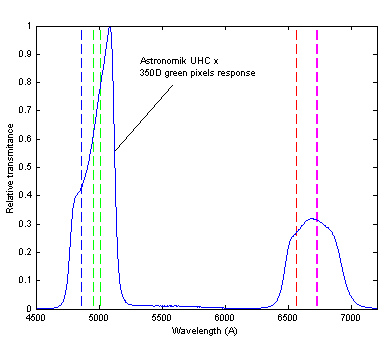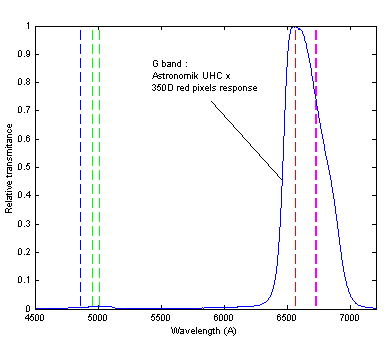
Pixel
relative response of a modified Canon EOS 350D (click here
for details). The dashed vertical lines indicate the position of
major nebular spectral lines. From left to right: Hbeta, OIII doublet,
Halpha, SII doublet.

Measured
relative transmission of filters used. Click here for complementary
informations.









